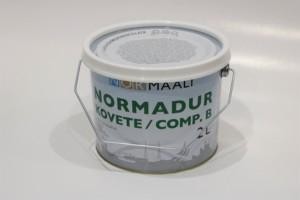In polyurethane coatings, both solvent-based and water-borne, the most significant health hazard comes from the isocyanates used in the hardener. In addition to polyurethane coatings, isocyanates can also be used in other types of coatings. Isocyanates are a significant group of compounds causing occupational asthma. When working with isocyanates it is important to protect not only the respiratory tract but also skin carefully, because isocyanates can cause allergic contact dermatitis.
DI-ISOCYANATES
- Di-isocyanates are classified as respiratory and skin sensitizing and irritating compounds and as toxic or harmful if inhaled.
- Due to the relatively high vapor pressure of di-isocyanates, significant concentrations may occur in the workplace air at normal room temperature.
- Isocyantes enter the body through respiratory tract, the skin and when swallowed. Isocyanates cause respiratory and eye irritation symptoms. High concentrations can cause acute irritation symptoms, such as sore throat and irritating cough, stinging and burning sensation in the eyes.
- Prolonged contact with the skin can cause redness and blistering due to an irritation mechanism as well as irritation contact dermatitis. Splashes in the eyes are highly irritating and can damage the cornea.
- The risk of exposure due to the methods of use is greatest when spraying coating containing isocyanate.
- The sensitization threshold (isocyanate concentration in the air) is not known.
- Even at very small concentrations, isocyanates can cause diseases caused by a sensitization mechanism, such as asthma (the most common), allergic rhinitis and allergic alveolitis (the rarest) in repeated exposure. Diseases resulting from skin contact include allergic contact dermatitis and protein contact dermatitis.
- The cover (label) of preparations containing isocyanates must clearly state the preparation contains isocyanates. Either that the product is classified with the hazard statement “May cause an allergic reaction” and isocyanate is mentioned in the hazardous subtances, or additionally with the hazard statement “Contains isocyanates. May cause an allergic reaction.”. After February 24, 2022, information about the future mandatory isocyanate training, which will be put into operation in August 2023, will be added to the cover.
- In order to minimize health hazards, exposure in isocyanate work must be reduced by all possible means, primarily by technical control solutions, such as enclosure and installation of local exhaust ventilation or the use of tools with built-in target exhaust. However, there are tasks where the use of protective equipment is necessary despite good technical solutions, for example spraying or varnishing with products containing isocyanates.

Normadur hardener (comp. B) contains di-isocyanates.
PERSONAL PROTECTION WHEN SPRAYING COATINGS CONTAINING ISOCYANATES
Respiratory protection: If ventilation is insufficient, half- or full mask with gas filter A, and when grinding P-type dust filter must be used. Mask with combined filter (gas & dust) ABP must be used when spraying. In the continuous long-term work it is recommended to use motored air protector or separative protector (fresh air hood or compressed air hood or such).
Hand protection: When choosing a protective glove material, penetration times, rates of diffusion and the degradation must be considered. Material of gloves: Wear suitable gloves tested to EN374. May be used, gloves (breakthrough time) 4-8 hours: butyl rubber, nitrile rubber.
Eye/face protection: Tightly sealed goggles. The eye flushing device should be located near the the paint work area.
Body protection: Protective work clothing
